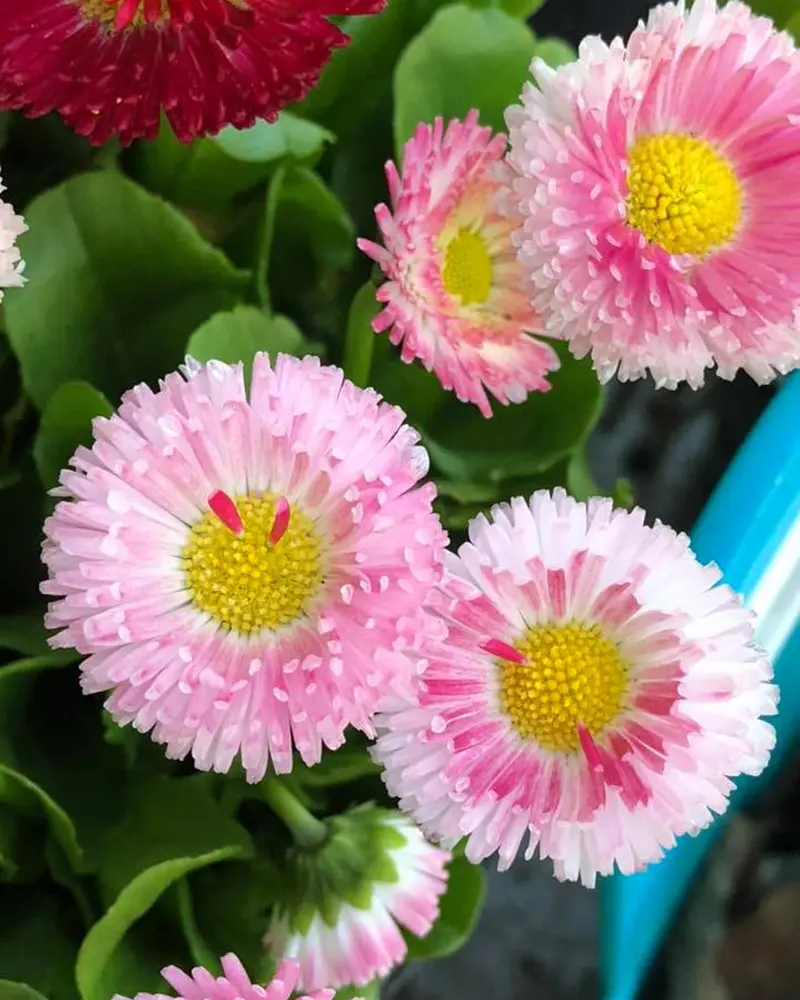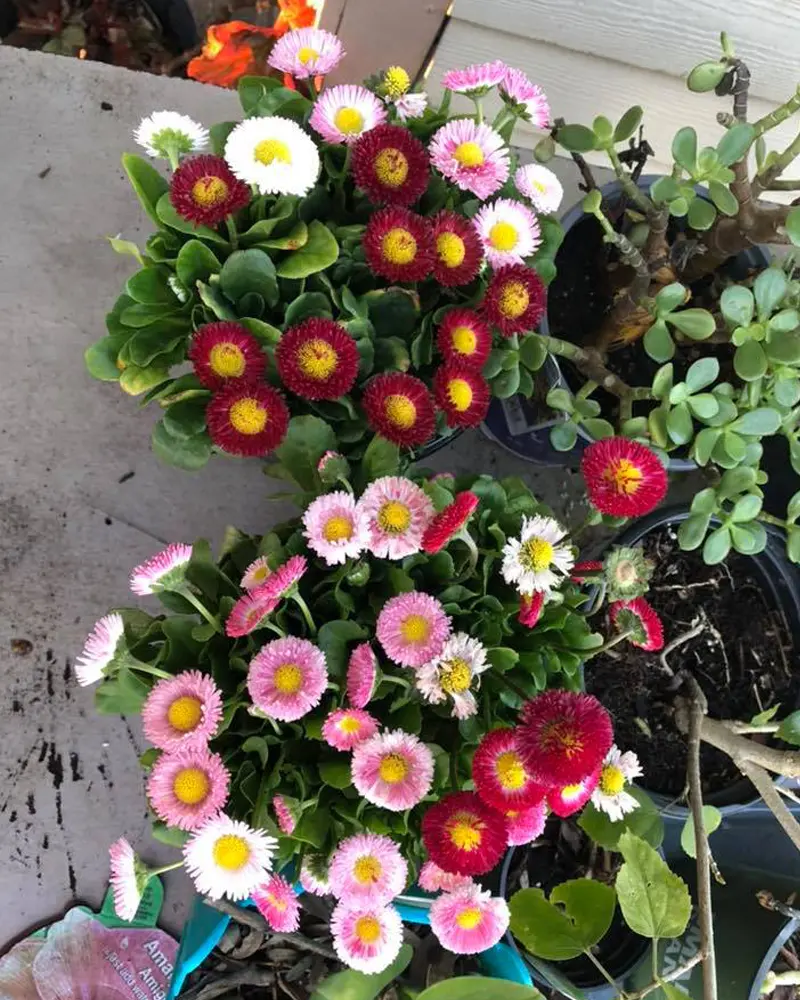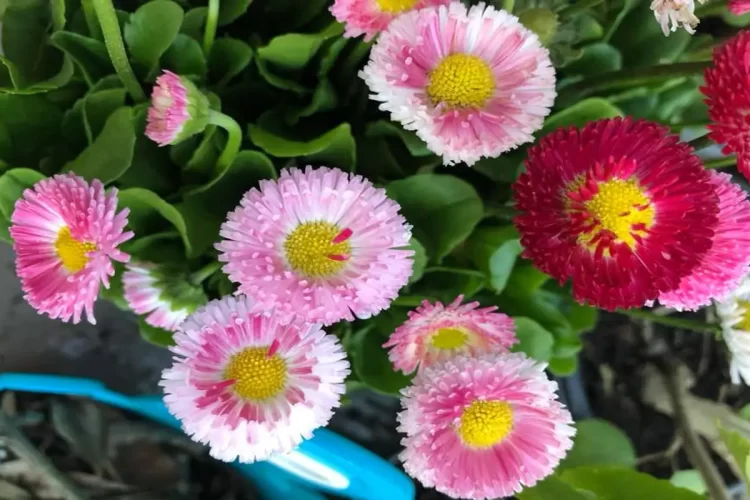The English Daisy (Bellis perennis) is a charming perennial plant that brings vibrant splashes of color to gardens worldwide. Known for its cheerful white, pink, or red blooms with bright yellow centers, this plant is native to Europe and has become popular in temperate regions globally. With proper care, it can be a resilient and delightful addition to your garden, filling beds, borders, and even pots with a soft, meadow-like beauty.
In this article, we’ll delve deep into the specifics of growing, maintaining, and maximizing the impact of English Daisies in your garden, covering everything from sunlight and soil requirements to the benefits of companion planting. Let’s explore the best practices to cultivate these beautiful flowers.
What are English Daisies?
The English Daisy (Bellis perennis) belongs to the Asteraceae family, which includes a wide variety of flowering plants, such as sunflowers and chrysanthemums. While the English Daisy is often considered a wildflower, it has been cultivated for ornamental use due to its compact growth, vividly colored blooms, and ability to adapt to a range of environments. With its long blooming season, typically from early spring to late summer, this daisy adds lasting color and charm to gardens.
Ideal Growing Conditions for English Daisies
Sunlight Requirements
English Daisies thrive best in full to partial sunlight. They need about 4–6 hours of sunlight daily to maintain their health and vibrant colors. While they can tolerate a bit of shade, prolonged periods without sunlight may cause the flowers to become leggy or diminish in bloom frequency.
Soil Requirements
A well-drained, moderately fertile soil with a slightly acidic to neutral pH (6.0 to 7.0) is ideal for English Daisies. While they can adapt to various soil types, rich organic matter in the soil enhances bloom production and supports healthy root development. Incorporating compost or aged manure into the soil before planting can supply essential nutrients.
Watering Needs
English Daisies need consistent moisture, especially during dry periods. Watering once or twice a week is usually sufficient, but ensure the soil does not remain waterlogged as excessive moisture can lead to root rot. A layer of mulch around the plants can help retain moisture and prevent weeds from taking over.
Planting English Daisies: Step-by-Step Guide

- Choose the Right Location
Pick a sunny or partially shaded spot with well-drained soil. Avoid areas prone to waterlogging. - Prepare the Soil
Loosen the soil to a depth of 8–10 inches and mix in organic compost to improve fertility. - Planting Seeds or Seedlings
- Seeds: Sow English Daisy seeds directly in the ground in early spring or late fall.
- Seedlings: Space seedlings 6–12 inches apart to allow for proper air circulation.
- Watering After Planting
Give the plants a deep watering after planting to help the roots establish. Maintain consistent moisture without overwatering.
Caring for English Daisies
Fertilization
Though English Daisies aren’t heavy feeders, a balanced fertilizer (such as 10-10-10 NPK) applied once in early spring can promote stronger blooms and growth. Avoid applying too much fertilizer, as it can cause excessive leaf growth instead of flowers.
Pruning and Deadheading
Deadheading spent blooms encourages new flower production and keeps your daisy plants looking neat. Simply remove the dead or faded flowers with a pair of garden scissors. Additionally, light pruning can be done to shape the plant and remove any damaged or unhealthy leaves.
Pest and Disease Management
English Daisies are generally low-maintenance, but they can sometimes be affected by aphids, slugs, or powdery mildew. Here are some strategies to prevent and manage common pests and diseases:
- Aphids: Use insecticidal soap or neem oil.
- Slugs: Spread crushed eggshells or coffee grounds around the base of plants to deter slugs.
- Powdery Mildew: To prevent powdery mildew, avoid watering from above and make sure the plants have good air circulation.
Winter Care
English Daisies are hardy in USDA zones 4–8, which means they can tolerate some cold but may require winter protection in regions with harsh winters. Applying a layer of mulch around the plants in late fall can help insulate the roots and protect them from freezing.
Propagation Techniques for English Daisies

Propagation of English Daisies can be done through seeds or division.
- Seed Propagation
Start seeds indoors about 6–8 weeks before the last expected frost. Plant the seeds in seed trays filled with a sterile seed-starting mix. Keep the soil moist and place the trays in a bright, warm location. Once seedlings have 2–3 leaves, they can be transplanted into the garden. - Division
Division is an effective way to propagate mature English Daisy plants. In early spring or fall, dig up the plant and gently separate the root clumps. Replant each division in well-prepared soil, spacing them appropriately.
English Daisies as Companion Plants
English Daisies make excellent companion plants for various vegetables, herbs, and flowers. Here are a few benefits:
- Pollinator Attraction: Their flowers attract bees and other beneficial pollinators.
- Ground Coverage: English Daisies spread moderately, helping suppress weeds and reduce soil erosion.
- Natural Pest Deterrence: These daisies help repel some harmful insects from nearby plants, making them ideal for vegetable gardens.
Best Companion Plants for English Daisies include:
- Lavender
- Rosemary
- Salvia
- Pansies
- Snapdragons
Common Varieties of English Daisies
There are several cultivars of Bellis perennis that vary in color, flower size, and petal shape. Popular varieties include:
- Bellis perennis ‘Pomponette’: Features double blooms with a pom-pom-like appearance, available in pink, red, and white.
- Bellis perennis ‘Tasso’: Known for its vibrant, fully double blooms and a compact growth habit.
- Bellis perennis ‘Habanera’: Distinguished by large blooms with quilled petals in various shades of red, pink, and white.
Each of these varieties adds a unique aesthetic to your garden, and selecting a mix can create a more dynamic visual effect.
Benefits of Growing English Daisies in Your Garden
1. Low Maintenance
Once established, English Daisies require minimal care, making them an ideal choice for gardeners of all skill levels.
2. Long Blooming Season
With their ability to bloom from spring through late summer, these flowers provide color for an extended period, enhancing the garden’s appearance for months.
3. Versatile Planting Options
English Daisies are adaptable and can be planted in various settings—flower beds, borders, or containers. Their compact size and moderate spread make them ideal for edging and ground coverage.
Frequently Asked Questions
Can English Daisies grow in pots?
Yes, English Daisies grow well in containers. Ensure that the pot has good drainage and use a light potting mix. Container-grown daisies require regular watering as they dry out more quickly than those planted in the ground.
Are English Daisies invasive?
In some regions, English Daisies can spread quickly, but they are not generally considered invasive. However, regular maintenance, such as pruning and deadheading, can keep their growth in check.
Do English Daisies come back every year?
Yes, English Daisies are perennials and can return each spring if grown in suitable USDA zones (4–8).


